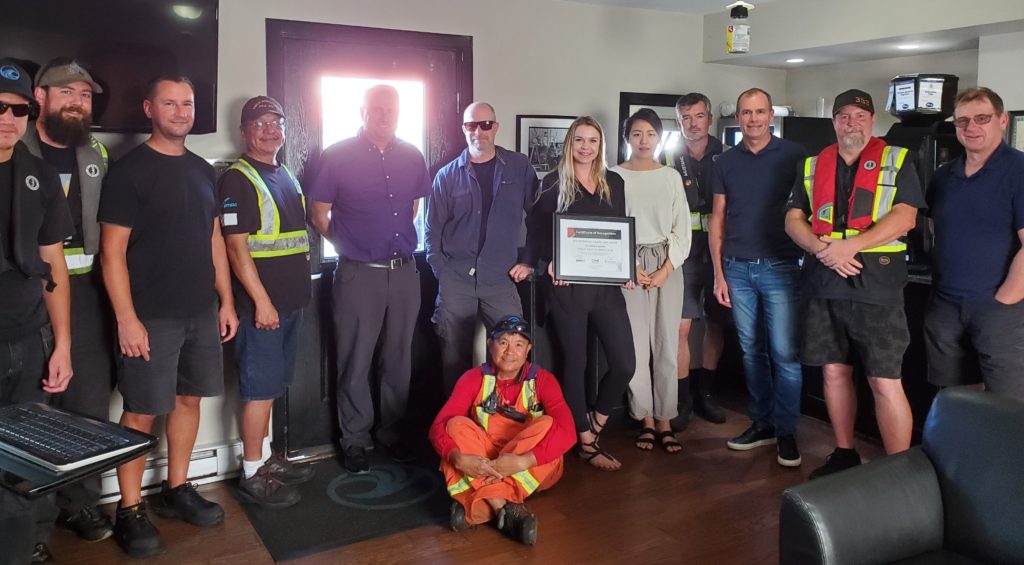Accidents, loneliness, and fatigue are all part of the job as a truck driver. But does this make them more at risk for mental illness?
TORONTO, Ont. – It’s an uncomfortable topic to bring up with friends and family, let alone bosses and coworkers. It’s not nearly talked about enough in most industries, and certainly not discussed enough in trucking.
Mental health.
Statistics show that on any given week, more than half a million Canadians will miss work because of a mental health problem. And those numbers don’t include those people who mask their mental health issues as something else.
Studies also show that one in five Canadians are suffering from mental illness today.
However, truck drivers in particular seem to be at a greater risk for mental illness when you take a closer look at the nature of the occupation.
Being out on the road, alone, sometimes for weeks at a time, takes a toll on one’s mental health. It’s lonely. There’s close calls, accidents, time away from family, and stressful situations happening every day on the road.
Truck driving is a profession with one of the highest rates of injuries. The Federal Motor Carrier Safety Administration (FMCSA) published a study in 2012 that revealed close to one third of the 3.5 million drivers in the U.S. would be involved in an accident in their careers. Accidents mean stress, and more importantly, trauma, which is deeply rooted in mental illness.
Compound that with the fact that the average age of a Canadian truck driver today is just over 47 years old, and according to the Mental Health Commission of Canada (MHCC), by 40 years old, more than half of the population will have had or have a mental illness.
All of this seems alarming when you remember the fact that most drivers don’t spend much time at home, so getting professional help is unlikely because of the demands of the job.
Yet, it seems the industry is tight-lipped about what to do or how to help these drivers.
And this is likely due to the stigma attached to mental health problems, according to Nitika Rewari, the manager of workplace mental health, research, evaluation, and knowledge translation at MHCC.
“There is a large stigma that is associated with mental illness and many are afraid to speak up to their employers because they are scared they will be fired or judged for it,” she said.
As well, the trucking industry is extremely male dominated, with less than 3% of truck drivers being women.
“I would assume that this doesn’t help the disclosure rates,” Rewari added. “We find that disclosure of mental illness is less likely for men. We might find that in our society overall, males have been told to be the strong ones, to keep their emotions together and not show what their feelings are. And this leads to less disclosure.”
***
Al Goodhall, who has been driving trucks professionally since 1998, said he first suspected something was wrong when he snapped at his wife one day over the phone while on the road.
“It was 10 to 15 years ago,” he said. “And after I hung up, I thought, what’s going on? And then I starting looking at things like mental health, because I had never done that before or felt like that before.”
Goodhall figured he had depression, and didn’t seek any counselling for it. Partly because he felt it was a personal issue, and partly because of the nature of his job.
“(The depression) comes and goes,” he said. “I still deal with it fairly regularly. Once my grandkids were born, it was a real focus on the family again. I work every weekend so miss a lot, and that’s what really started playing it up again. It’s difficult being away for five or six days a week.
“The mental side is the deeply fatiguing side. You can finish a day on the road and you’re just wiped. And that’s a problem. Some people don’t feel like going for a walk, or eating properly. And the industry has put such a focus on exercise and eating right, but we haven’t been paying attention to the mental side of the game.”
Goodhall said he’s found help through mediation. Every day he’ll try and take between 20 and 30 minutes of his day to clear his mind and relax.
“It helps me to not overreact, to be patient to look at it and say, okay this is happening. This is frustrating, but at least you recognize it,” he said.
Like, Goodhall, David Henry, who has been driving professionally for 30 years, has also battled his share of mental illness throughout his career.
In 1991, the Manitoba native suffered a major head injury. And despite getting physically better from the injury, he ignored the mental side of things for about ten years until 2001.
In 2001, he was sleeping in his truck at a truck stop when a rookie driver smashed into his rig quite badly. Henry was thrown from the sleeper up to the cab.
“Although the amount of damage to my body was less in 2001, than in 1991, it compounded on itself,” he said.
It was then that Henry started getting mental help. He was diagnosed with depression and post-traumatic stress disorder (PTSD).
“Drivers see a lot of stuff on the highways,” he said. “PTSD isn’t just for people who have been through war. Because I got woken up in the middle of the night…it was a traumatic experience…The amount of accidents we see, close calls we see…it’s a lot.”
Henry was off for a few years after that.
In May 2016 he fell off his trailer and injured his head once again. Shortly after that in December 2016, he went to rehabilitation facility in Winnipeg that focused on “body, mind, and soul” for four months.
Henry said the experience was life-changing.
“I ended up graduating the program,” he said. “And I’m not out of the woods for depression, I don’t think I’ll ever be…but I’ve learned a lot about mental health, and I’ve learned so much in dealing with other people and trying to help other people who are in the same position.”
When Henry returned to work in April 2017, he was fired.
“They didn’t want somebody that has had four major head injuries,” he said. “They didn’t like the fact that I went on compensation.”
So, instead, Henry did some research and job hunting and applied to work at REK Express.
“I finally found a company that walks the walk,” he said. “I’ve told them very openly what my problems are and they don’t treat me differently than they treat anyone else. They work hard to be a good workplace. It doesn’t matter whether you have mental health issues or don’t. Everyone here is treated with respect.”
Both Goodhall and Henry agreed that mental health needs to be discussed more in the industry as a whole, but didn’t seem hopeful that anything would be done about it any time soon.
***
Nitika Rewari says to combat the stigma surrounding mental illness, employers need to have policies in place that show support for their employees.
“Employers to have a duty to care,” she said. “They also have the tools in their box to make the process and policy changes. They have the right and resources to add to their employee assistance programs, and to provide more benefits for mental health. Employers also have the tools to invest in training programs, such as mental health first aid, etc.”
But employees also have a responsibility, she added.
“The employers won’t be able to identify which of those processes or training programs are needed or will be most useful to employees without hearing from them. Employees should provide feedback, whether its through focus group or surveys, or other discussion with managers. The other role of employees is to treat one another with respect, have relationships with coworkers with a non-judgemental attitude.
“So the employees are the ones who have to apply all of the changes that the employer will make and use the services if you have a mental problem.”
If you as an employer, don’t know where to start on creating a mental health policy, Rewari suggests reaching out to your health insurance provider, or trucking industry associations like Trucking HR Canada for guidance.
January 29th is Bell Let’s Talk day, visit their website for more resources and information.

